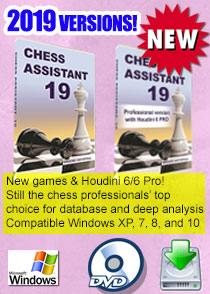Improvement for candidate masters (2000 – 2200 Elo)
Improvement Guide Articles
Here are some articles by GM Alexandra Kosteniuk and chess guru Steve Lopez on how best to improve at chess from different levels. You can come back to this main page anytime.By the time you become a titled player (known as “Expert” level in the U.S. and as a “candidate master” in many other countries) you’ve acquired a solid grasp of most aspects of chess play: tactics and strategy, openings, middlegames, endgames, and pawn structures. You’re experienced at planning and maneuvering, and you’re able to spot checkmate sequences and combinational possibilities many moves in length.
At this stage in your development you will need in some measure to focus your attention on what your opponent is doing. You’ll need to develop your skills in spotting and understanding your opponent’s plans, as well as hone your ability to create effective counterplans to thwart your opponent’s intentions. It’s also possible to now concentrate on limiting your opponent’s creative potential through preventive measures, achievable by fully understanding advanced maneuver techniques in different stages of play.
The opening, endgame, and strategy courses recommended in the previous section, as well as the Chess Assistant database program, will remain valuable resources throughout this level of your development (as well as through the rest of your chess career). Some additional middlegame instruction will help you learn preventive play as well as instruct you in the art of more complex maneuvering.

Chess Middlegame Collection is a superb low cost “package” of multiple chess courses which will provide you with the training you need for preventive play. The collection includes Chess Strategy which explores 18 strategic motifs including typical pawn structures and weaknesses. Chess Middlegame Collection also contains a five volume set of chess courses called Encyclopedia of the Middlegame, each volume of which takes a unique approach to middlegame instruction: each volume teaches the typical middlegame motifs which arise from specific chess openings. The five middlegame volumes are organized by chess opening, and each typically contains 500 annotated games which illustrate the strategic themes and more than 300 practical exercises which let you practice what you’ve learned.
We hope you’ll find our chess improvement advice useful in the advancement of your chess career. Even if you don’t use the chess courses recommended in this guide, we trust you’ll find our general improvement advice helpful when you’re deciding on a study and training regimen.































